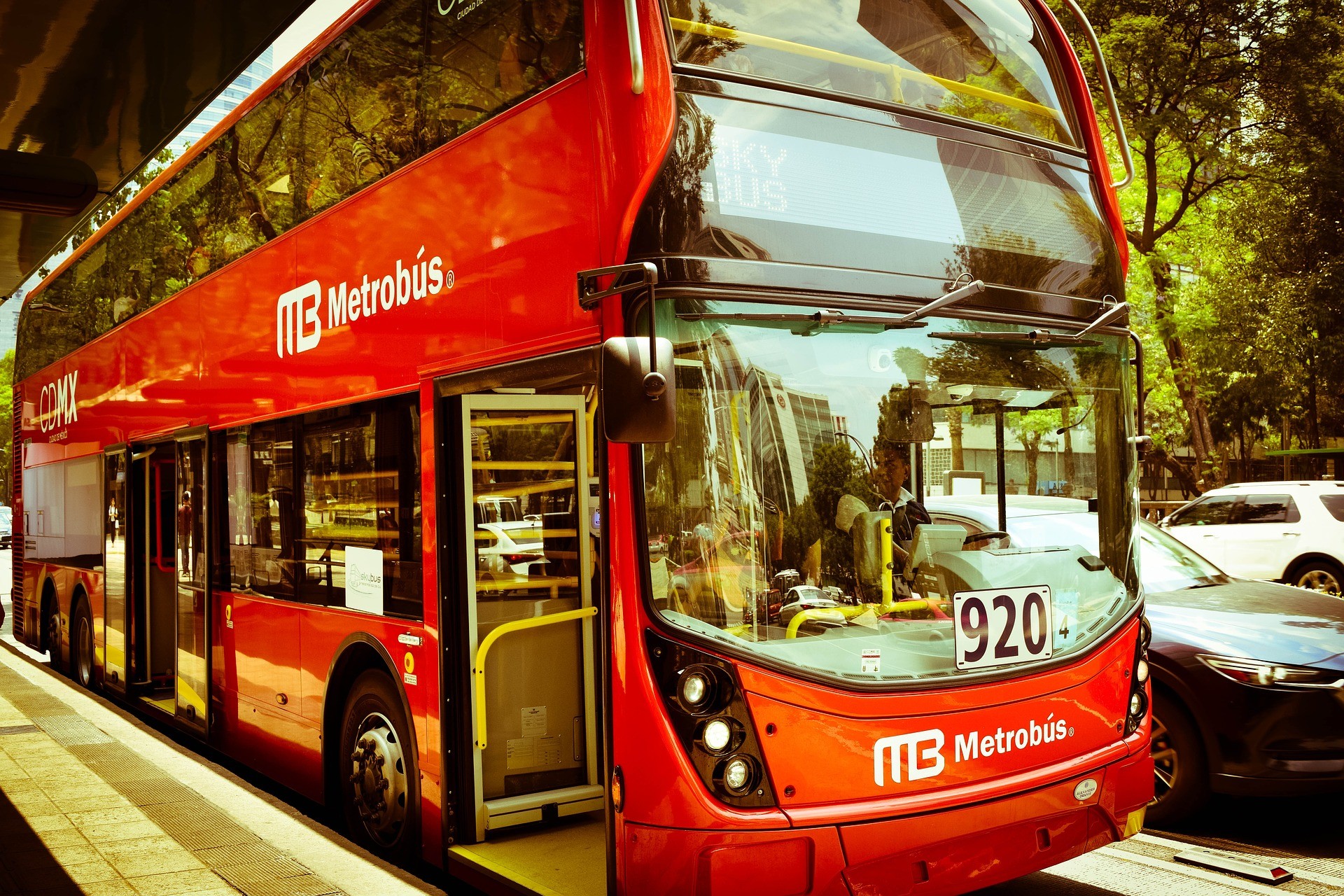Author | Arantxa HerranzMexico City covers an area that accounts for 0.1% of the country and it has a population of 8,918,653. If we take into account the entire metropolitan area, the figure stands at 21 million inhabitants. Over the last two decades, and given its growth, a series of measures have been implemented, designed to promote the use of public transport instead of private transport to improve air quality. To put this into perspective, it is worth noting that, if in the 1950s the city’s urbanisation rate stood at around 43%, by 2010, it had already reached 78%.The Metro was the dominant form of transport for a long time, measuring around 250 km in length and carrying 4.5 million travellers per day. Traditional transportation systems were generally made up of slow bus services and privately-owned minibuses. The buses were old and highly polluting. These transport deficiencies led to the creation of new motorways; however, in time, it became clear that these measures were causing even more traffic congestion and the project would only serve a small percentage of the city’s inhabitants.On an ordinary working day, over 17.3 million people commute to and from the city. Plus, there are a further 14.7 million trips within the city.Yet, out of these trips, 4.34 million are in cars, while 18.98 million are made using public transport. However, the public transport system is saturated in central areas, while the areas on the outskirts have a very poor public transport system, with long travel times in both directions (it is estimated that each journey can take between two and three hours). To top it all, the public transport system is not particularly cheap for low-income families either. In some cases, people need to allocate one in three dollars to transport
A less polluting form of transport
Road transport is the main cause of CO2 emissions. This is why the authorities decided to implement a series of policies, programs and measures aimed at reducing pollution and improving the public transport network.One of the most successful measures (and the longest-standing measure in force since 1989), is the “Don’t Drive Today” project. With this system, vehicle use is restricted during weekdays, based on registration plates. Furthermore, taxis that are more than 10 years old are not allowed on the streets and cars have to verify their emission levels every six years. When pollution is at its highest, traffic is cut by up to 40%.One of the government’s most emblematic public transportation projects, was the implementation of the bus rapid transit (BRT) in 2005, which is cheaper and more flexible than other alternatives and also has a better connection system with other modes of transport such as the metro or bike sharing stations. Large-capacity buses replaced more than 2,300 polluting microbuses and the authorities estimate that the Metrobus system has enabled the elimination of 270,000 journeys using other forms of transport, preventing the emission of more than 180,000 tonnes of greenhouse gases each year.The Nochebús service (nocturnal buses that operate between midnight and 5:00 am, covering 11 routes along a network of 319 km) is also highly valued. The service began in 2013 and a new route service was implemented in 2018, with fixed stops and timetables. This system has enhanced the safety and efficiency of the nocturnal transport system in the city.
Sustainability and accessibility
The city has also committed to an Electric Transport Service. These units cover a total of 203 km, including the last “Zero Emission Bus Corridor –Zero Emission Bike Corridor” inaugurated in 2012. It is also in charge of the city’s electric bike programme.More recent policies, such as the Mobility Law 2014, focus on an integrated, socially-inclusive, resistant and people-focused mobility system. Mexico City’s Strategic Mobility Plan 2019 focuses on redistributing the road space and promotes investments in sustainable methods of transport, with the aim of integrating the different forms of transport in the city, improving infrastructures and services and increasing accessibility and safety for all users.Shared mobility has increased significantly over the last decade in Mexico City. For example, the public bike-sharing system has 480 stations and 6,800 bikes. Since its launch in February 2010, the system recorded more than 58.5 million journeys and has prevented the emission of 4,541 tonnes of CO2.The city’s transport projects and changes have provided significant economic, social and urban benefits in recent decades, contributing to the area’s economy or to the redesigning of public spaces. The city’s decision to diversify its public transportation system or to invest in new mobility options such as BRT and the bike-sharing systems have been successful and have partially enabled the pressure exerted on the saturated metro systems to be alleviated.The government has learned from its previous mistakes, such as the lack of accessibility of the Suburban Train. This project proved the importance of taking into account user accessibility and the involvement of stakeholders in a transport project, rather than mainly focusing on feasibility and infrastructure.Images | Daniel4villamil, mochilazocultural, Stanely Nguma






















































